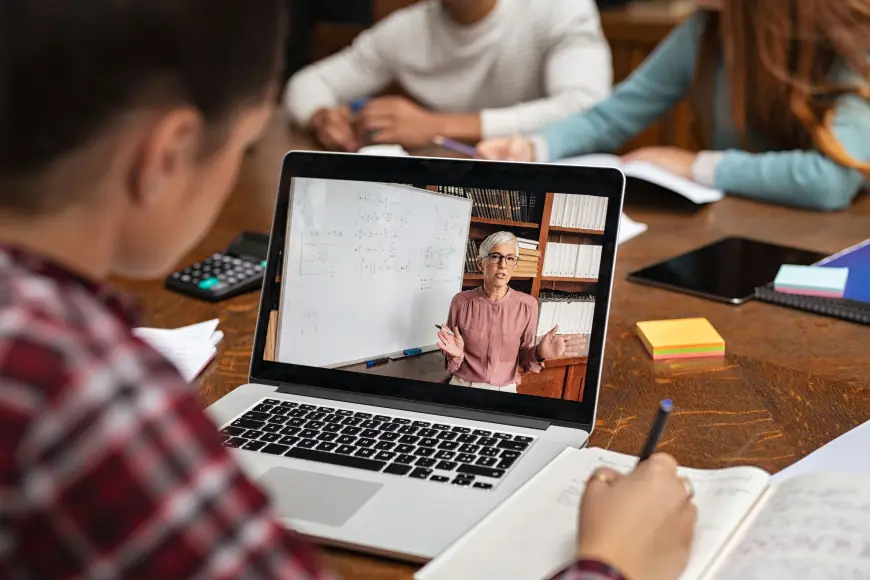How do you develop online learning?
Who says learning has to take place within four walls? Learning no longer needs physical space.

Who says learning has to take place within four walls? Learning no longer needs physical space. Technology is reimaging the learning space making it more personal, more flexible, and more exciting than ever. Online learning platforms have become platforms where learning and curiosity can thrive anywhere at your pace, in your space, and on your terms. Developing a comprehensive online learning platform contains more than just uploading data to the websites by professional training, schools or academic organizations. In this procedure some online learning methods, technological combinations, instructional design and assessment tools are combined carefully. To create a dynamic and personalized learning environment one needs to target the students with varying backgrounds and abilities. The first steps in this process include selecting appropriate tools and platforms, understanding learning objectives, and creating engaging, relevant, and user-friendly content. There is no one-size-fits-all approach to creating online learning; constant innovation, adaptation, and feedback are required to ensure pertinent learning opportunities.
Ways to Create Personalized eLearning Courses
The term personalisation comes to mind in electronic learning articles, forums and guides. Personalised electronic learning includes activities and assessments tailored to the type of content that meets the needs of the online learner. It gives them a chance to move closer to their goals and solve their problems without needing the help of coworkers.
Key strategies for implementing personalised learning include:
-
Identifying learners’ strong and weak points through assessment.
-
Allowing learners to choose topics that they find interesting within the curriculum.
-
Offering various formats of content delivery, such as videos, readings, and interactive modules.
Moreover, these are the five best practices to consider when building e-learning experiences.
Evaluate online learners to recognise knowledge gaps
Recognising the skill and knowledge gap is another reason for online learning pre-assessment. You can give the information and skill development to the learner once you have judged their current understanding. Besides multiple-choice and quantitative e-learning assessments, you can use branching scenarios and simulations to validate their level of experience. This will help you determine how much they know about the topic and whether they are capable of putting it into practice.
Give learners the freedom to choose how they learn
Providing learner-centred e-learning activities, e-learning assessments, and multimedia is one of the pillars of personalisation. Online learners should be able to select the e Learning resources that best support their objectives. Additionally, they are seeking e-learning modules and activities that cater to their tastes and learning styles. For example, a learner who prioritises more visual e Learning activities might need to focus on polishing their communication skills. Online presentations, e-learning video demonstrations, and task deadlines are their prioritised learning resources. However, others might be trying to develop a different set of skills and perform better with audio e Learning materials. This person may look for webinars and e Learning podcasts that focus on their skill gap.

Establish doable goals
Determination is a significant obstacle for e-learning, particularly in asynchronous e-learning courses. Online learners have the competence to chase their own goals and objectives. However, their motivation and drive might wane due to the long-term nature of these tasks. For instance, a more complex goal that includes many steps and takes several weeks to complete. E-learning professionals can address the situation by establishing more manageable milestones for developing online learning. Establish a tailored timeline that online students can use to stay on track and check their progress.
Establish learner-centred objectives and goals
To develop online learning, it’s crucial to establish learner-directed goals that genuinely support students’ prosperity. Online learners must be able to see figurative light at the end of the hustle. Before planning the online class, it’s crucial to survey, interview and evaluate learners to incorporate their personalised objectives into the scheduled course. Although the organisation may have already established general learning objectives, including personalised goals for students, will help enhance online class engagement and retention. Consequently, this strategy will not only strengthen learners’ participation but also help develop online learning that is significant, versatile, and goal-centred.
Offer continuous online assistance
To develop online learning that's both influential and captivating, it's crucial to provide ongoing support as a central part of the experience. Self-centred e-learning must be constructed on a rigid online support tactic that acts as a framework for learners’ prosperity. This encompasses tools such as community threads, FAQs, social media groups, and direct communication channels, including email and instant messaging. These components enhance online class engagement by providing learners with opportunities to interact with colleagues and instructors daily.
Self-centred e-learning prevents the conventional "one size fits all" strategy by focusing on the specific needs of each learner. It allows them to follow their goals and stay energetically involved in e learning that's valuable to them. By merging easy-to-access support systems, you can increase online class participation and ensure that every learner secures something distinct and valuable. Making an effort to make online learning meaningful.
Ongoing Enhancement in Online Learning
Improving online learning involves a continuous process of examination and modification to enhance the overall learning experience. This strategy ensures that the educational approach advances in tandem with technological advancements and learner needs, promoting meaningful learning outcomes.
Conclusion
Last but not least, practitioner progress for educators is crucial. Consistent coaching on the latest pedagogical methods and digital tools guarantees that instructors stay aware and trained to apply best practices for online class help. This dedication to improvement eventually fosters a dynamic and enriching educational environment.
What's Your Reaction?
 Like
0
Like
0
 Dislike
0
Dislike
0
 Love
0
Love
0
 Funny
0
Funny
0
 Angry
0
Angry
0
 Sad
0
Sad
0
 Wow
0
Wow
0


















































